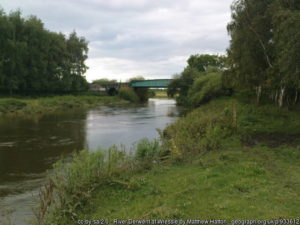
Too much silt in our rivers can cause a range of costly problems so it’s important to understand where it’s coming from. This is where environmental science begins to resemble detective work and may be why one of iCASP’s core team is taking a break from the programme to work with Yorkshire Water.
Janet Richardson is taking a six month sabbatical to work out where an accumulation of sediment in the Yorkshire River Derwent is coming from and what can be done to stop it.
Increased sedimentation in watercourses is unwelcome for a number of reasons including: increases in water treatment costs, the need to dredge waterways or reservoirs to allay flooding, the loss of recreational areas, and the detrimental impact it can have on fish such as salmon and trout. In her own words, this is what she’s up to:
I’m taking a break from my role as an impact translation fellow with iCASP to take up a 6 month NERC funded Industrial Mobility Fellowship (IMF). I’ll be working on a project with Yorkshire Water to discover where the sediment that is causing problems in the Yorkshire Derwent is coming from.During the project I’ll be using open-source, high-resolution satellite imagery and GIS software to map the sources, pathways and deposition of sediment within the catchment.
From this I’ll be able to create a model that I can put to the test in the field in order to highlight where intervention and management should occur within the catchment.
The resulting quick, repeatable GIS model and framework looking at sediment will be able to reduce water treatment costs and should be easily repeatable for other catchments within the iCASP region and further afield, so other water companies could benefit as well.
